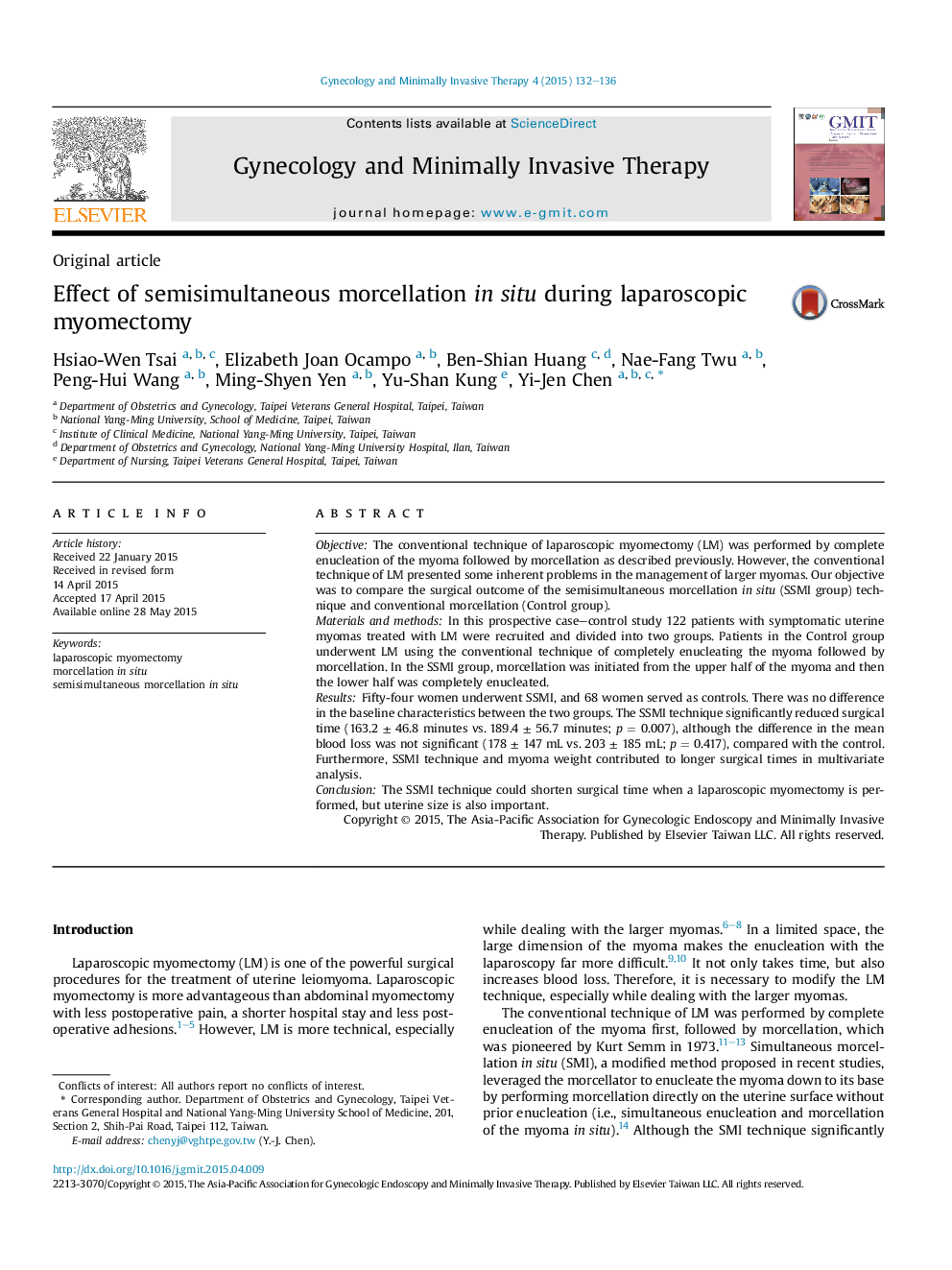| Article ID | Journal | Published Year | Pages | File Type |
|---|---|---|---|---|
| 3952000 | Gynecology and Minimally Invasive Therapy | 2015 | 5 Pages |
ObjectiveThe conventional technique of laparoscopic myomectomy (LM) was performed by complete enucleation of the myoma followed by morcellation as described previously. However, the conventional technique of LM presented some inherent problems in the management of larger myomas. Our objective was to compare the surgical outcome of the semisimultaneous morcellation in situ (SSMI group) technique and conventional morcellation (Control group).Materials and methodsIn this prospective case–control study 122 patients with symptomatic uterine myomas treated with LM were recruited and divided into two groups. Patients in the Control group underwent LM using the conventional technique of completely enucleating the myoma followed by morcellation. In the SSMI group, morcellation was initiated from the upper half of the myoma and then the lower half was completely enucleated.ResultsFifty-four women underwent SSMI, and 68 women served as controls. There was no difference in the baseline characteristics between the two groups. The SSMI technique significantly reduced surgical time (163.2 ± 46.8 minutes vs. 189.4 ± 56.7 minutes; p = 0.007), although the difference in the mean blood loss was not significant (178 ± 147 mL vs. 203 ± 185 mL; p = 0.417), compared with the control. Furthermore, SSMI technique and myoma weight contributed to longer surgical times in multivariate analysis.ConclusionThe SSMI technique could shorten surgical time when a laparoscopic myomectomy is performed, but uterine size is also important.
